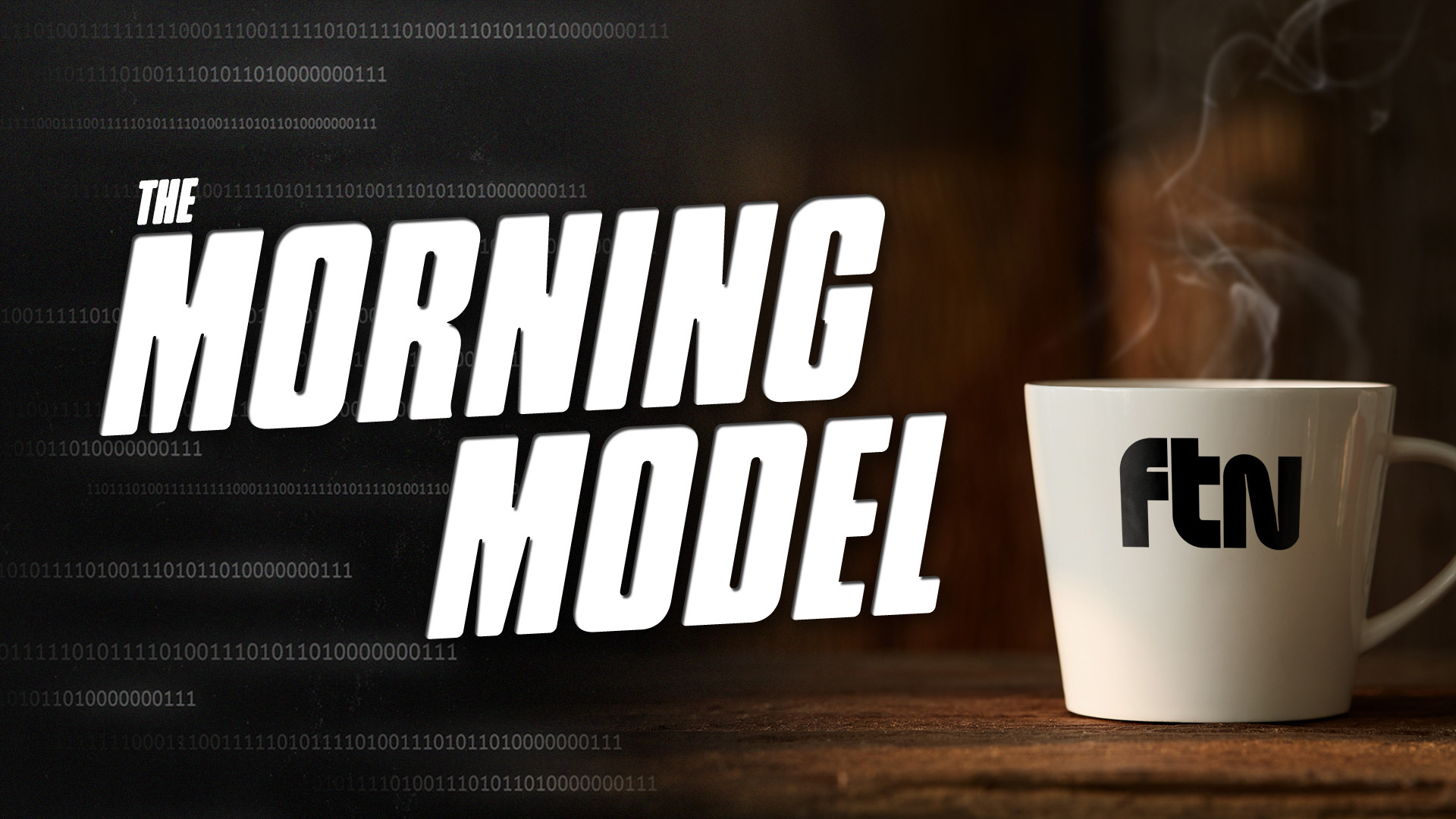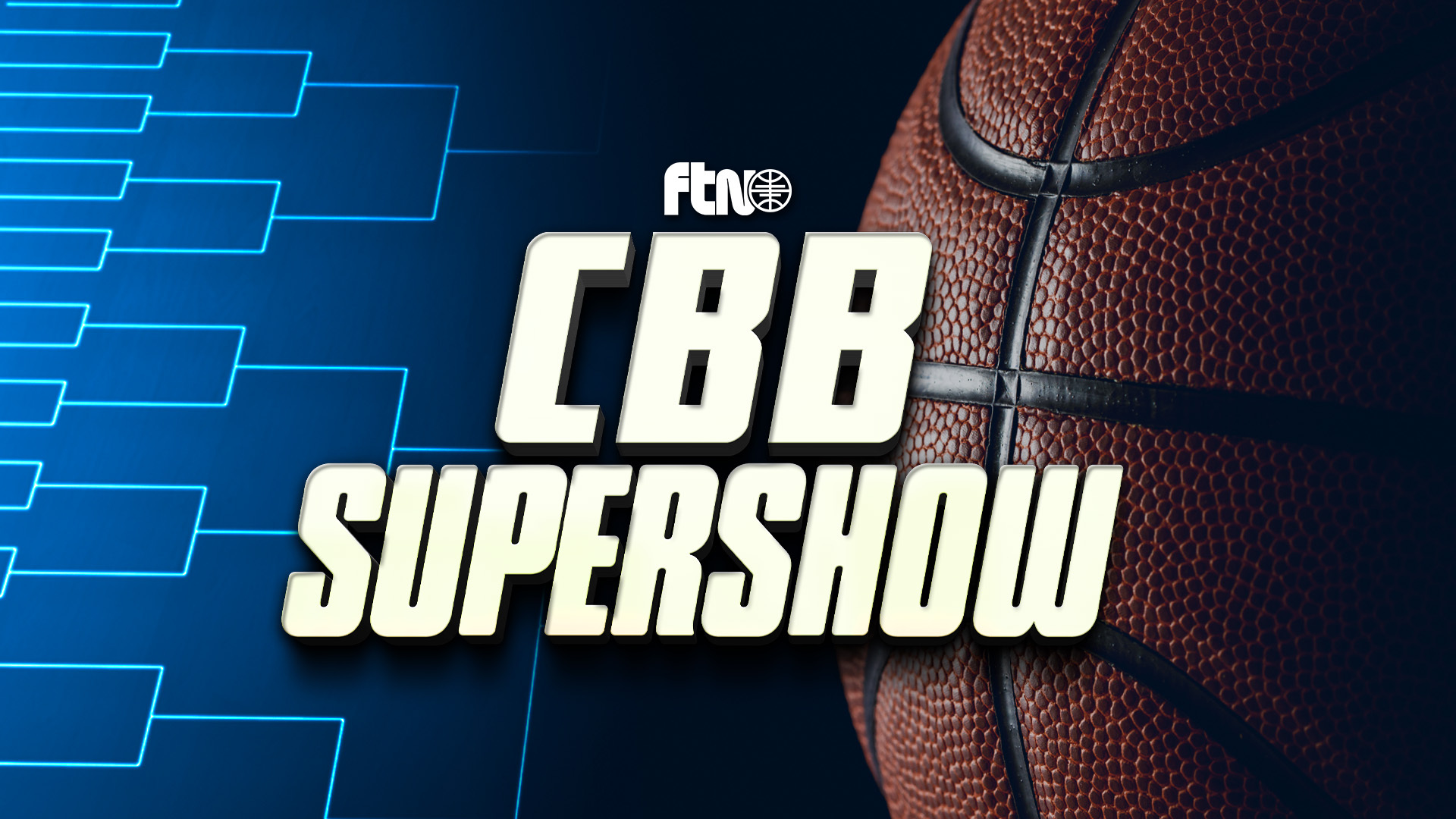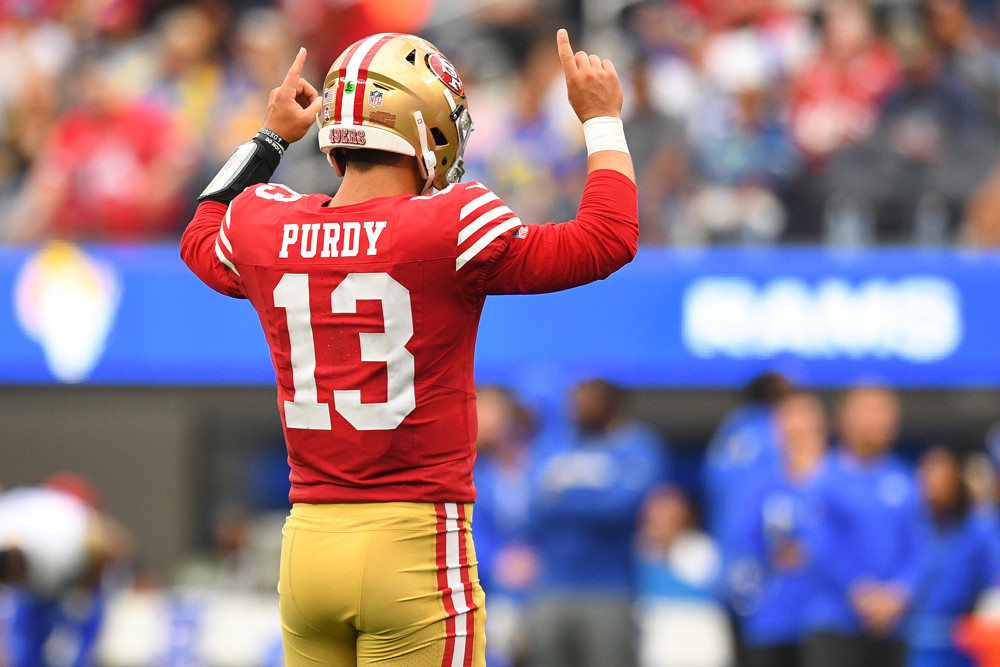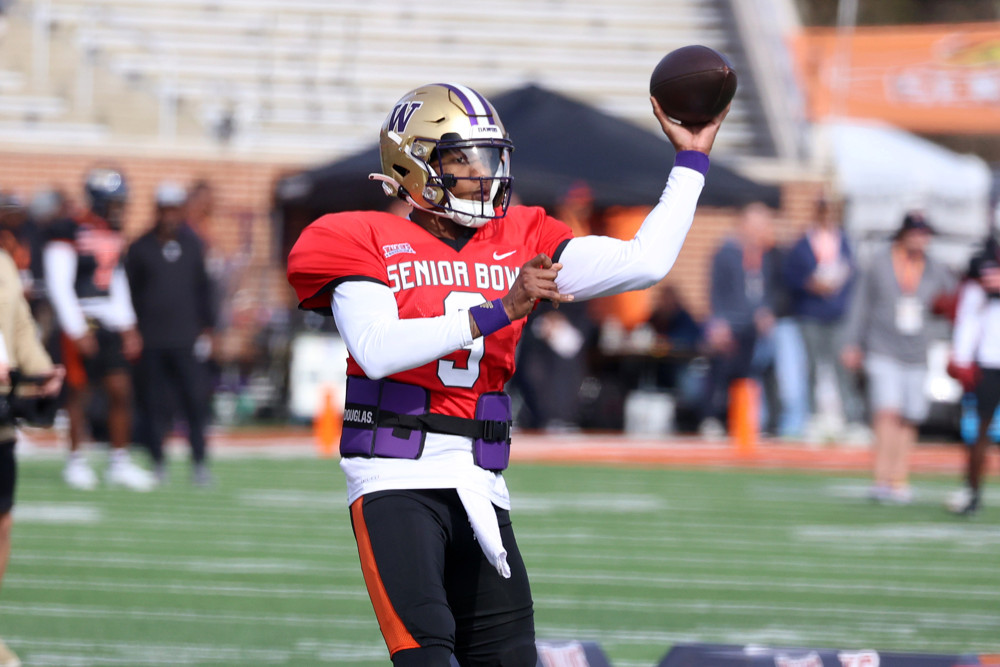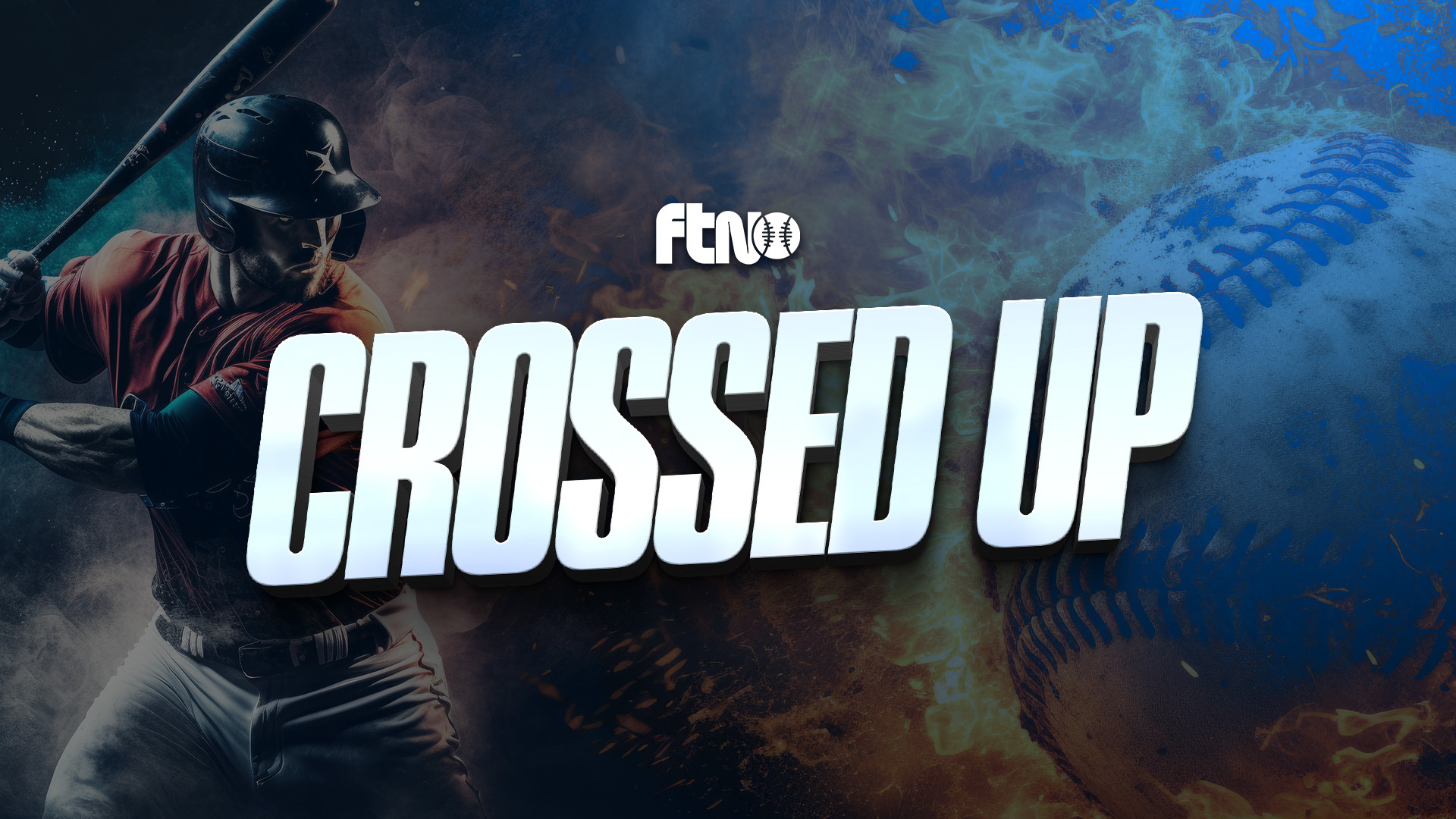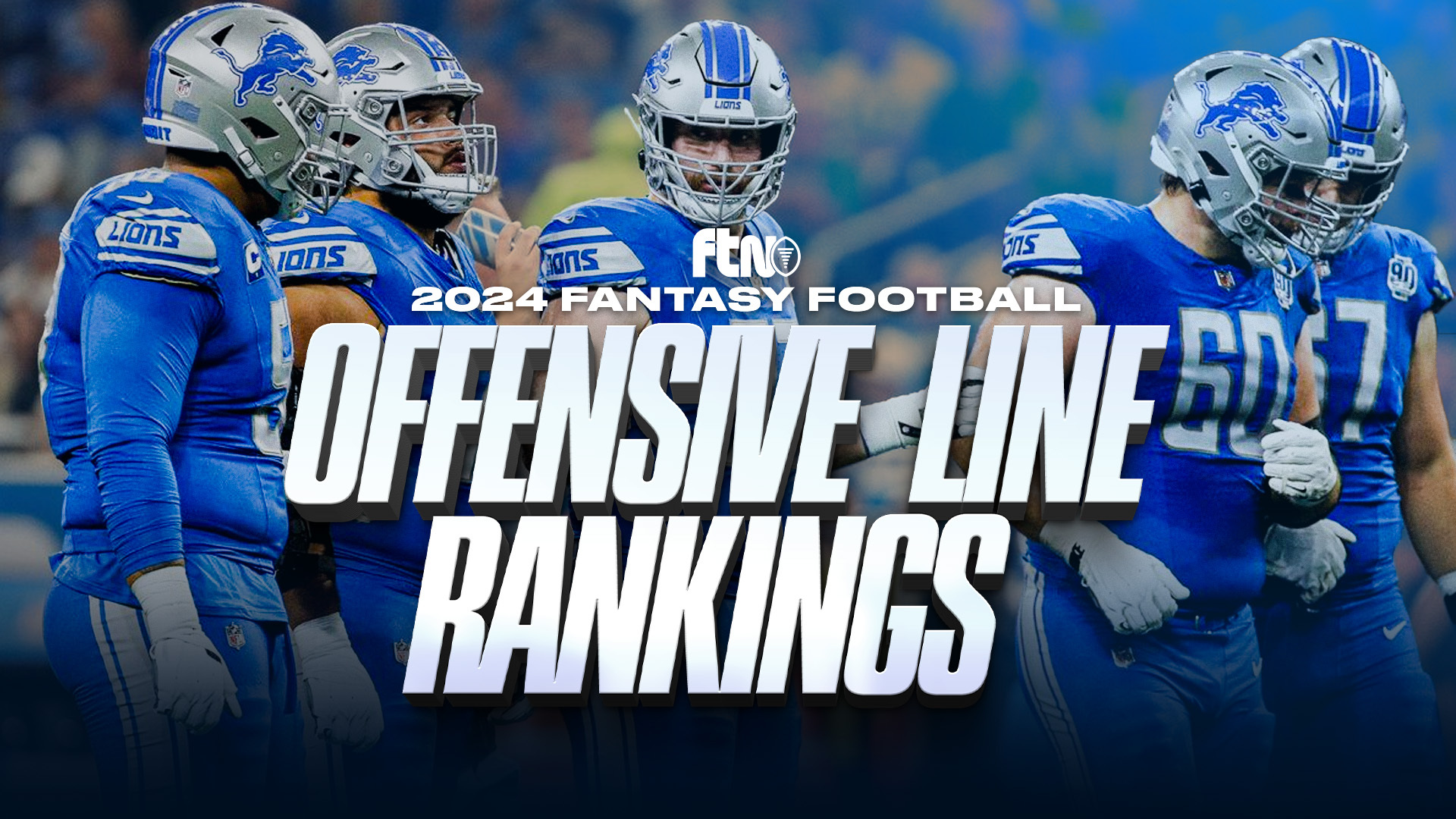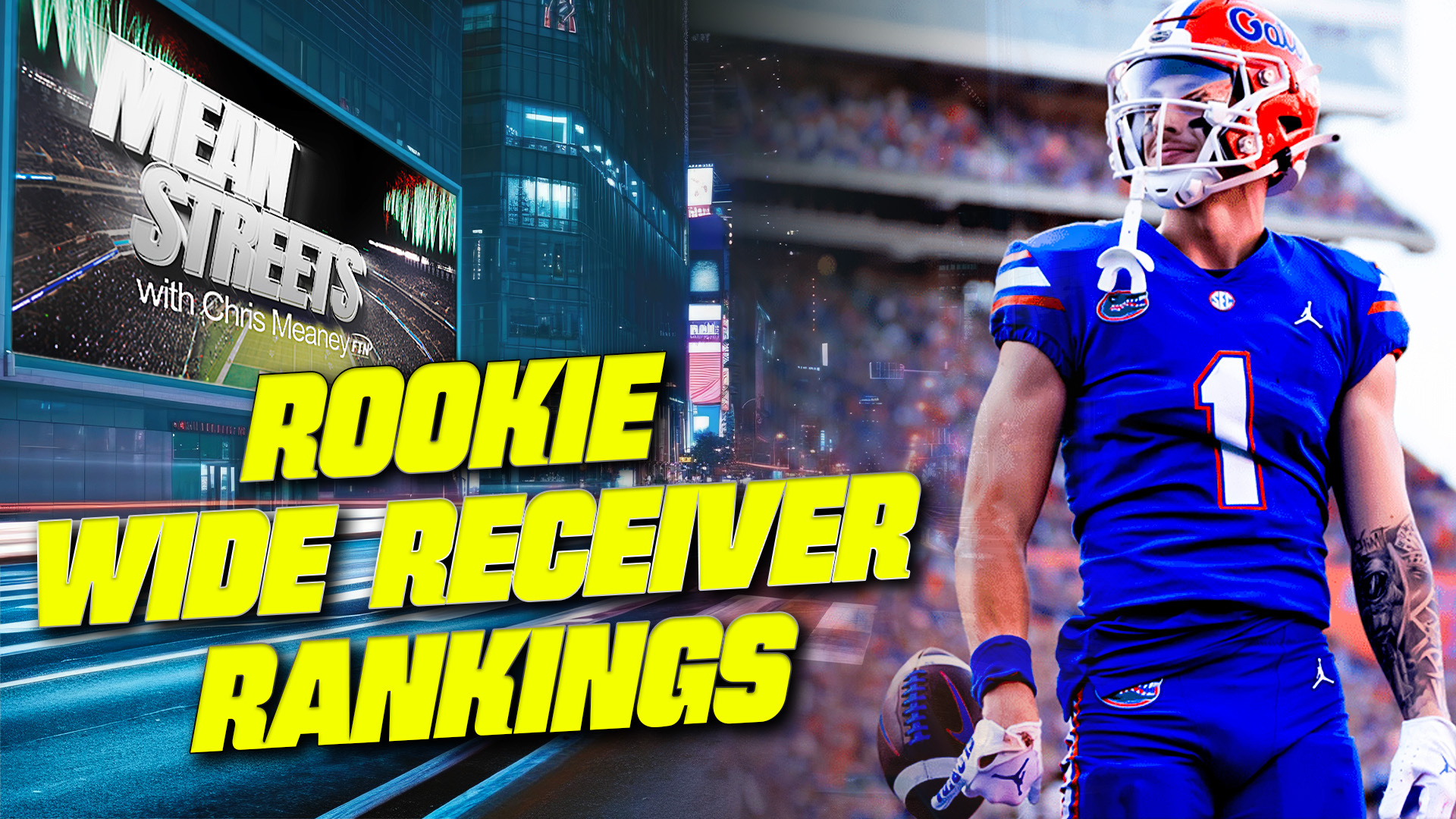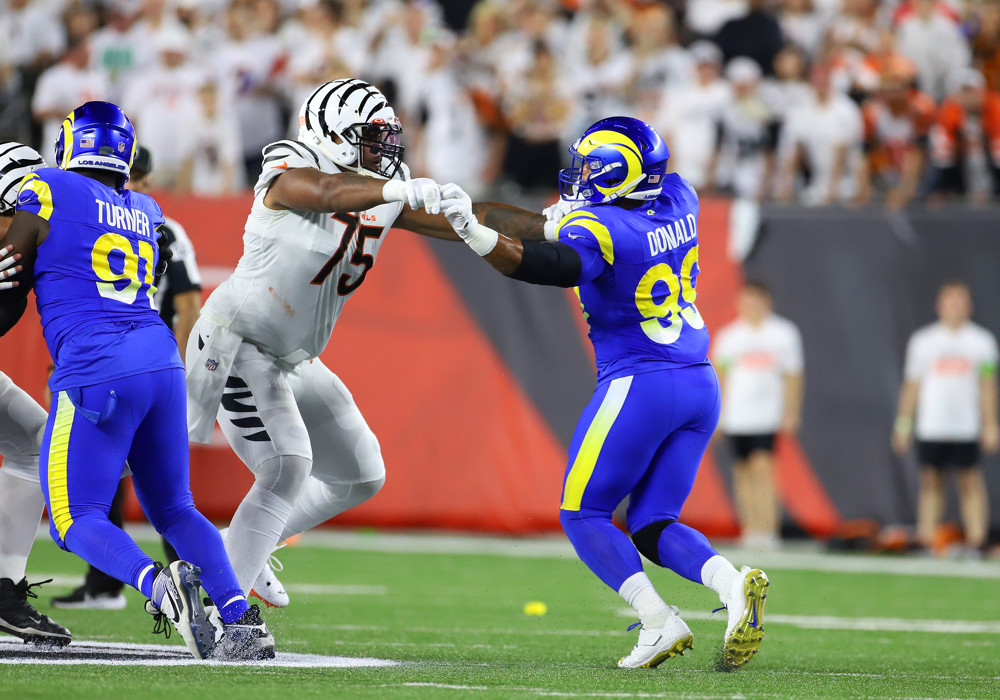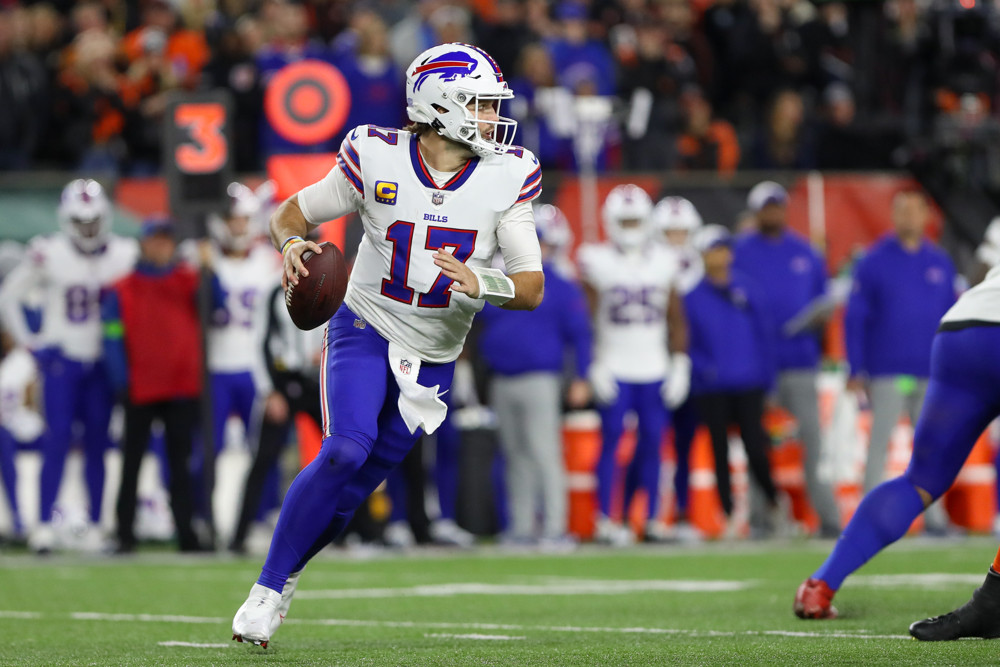
Recently, I was hit up by a local reporter to talk about this year’s Philadelphia Eagles collapse down the stretch. The next day, Ross Tucker tweeted out about how public perception of Jalen Hurts has fallen way too low because of those last few games. I happen to be in agreement with him about this, and it got me thinking about the Eagles’ collapse. How often do NFL teams divebomb like that over the final six weeks of the regular season?
The first idea I had was to look back at every team since 1981 and the change in DVOA over the last six weeks of the season. FTN subscribers can do this themselves for teams since 2002 using the “DVOA as of Week X” workbook from the DVOA Historical Archives. I wanted teams that were similar to the Eagles, so at first I limited my search to teams that had at least 10% DVOA with six weeks left in the regular season.
Even if you limit your search to teams above that line, the Eagles didn’t even have one of the 20 biggest declines over the final six weeks! However, they did have the biggest decline at the end of a season since the 2011 Chicago Bears. That team went 1-5 in the final six games with DVOA dropping from 15.4% to 0.9%, only a rounding error higher than Philadelphia’s drop from 15.6% to 1.1%. Here’s a look at the 10 biggest declines over the final six weeks since 1981. For some reason, declines like this were much, much more common in the 1980s than they are modern times. 1986 in particular was a big year for end-season collapses.
| Biggest Decline in DVOA in Last 6 Games, 1981-2023 | |||||||||
| Year | Team | W-L | DVOA | Rk | Final W-L |
Final DVOA |
Final Rk |
Change | Final 6 G W-L |
| 1995 | OAK | 8-2 | 34.2% | 3 | 8-8 | 9.7% | 9 | -24.5% | 0-6 |
| 1986 | NE | 7-3 | 27.1% | 3 | 11-5 | 2.8% | 14 | -24.3% | 4-2 |
| 1990 | CHI | 9-1 | 32.5% | 2 | 11-5 | 8.5% | 12 | -24.0% | 2-4 |
| 1986 | NYJ | 9-1 | 27.2% | 2 | 10-6 | 5.4% | 12 | -21.8% | 1-5 |
| 2007 | NE | 10-0 | 73.3% | 1 | 16-0 | 52.3% | 1 | -21.0% | 6-0 |
| 1986 | DAL | 6-4 | 12.8% | 9 | 7-9 | -8.0% | 21 | -20.9% | 1-5 |
| 1986 | DEN | 8-2 | 37.2% | 1 | 11-5 | 18.5% | 5 | -18.8% | 3-3 |
| 1997 | DAL | 5-5 | 23.0% | 5 | 6-10 | 4.5% | 10 | -18.6% | 1-5 |
| 1989 | CHI | 6-4 | 22.6% | 4 | 6-10 | 5.0% | 13 | -17.7% | 0-6 |
| 1993 | NYJ | 6-4 | 20.9% | 2 | 8-8 | 3.2% | 15 | -17.7% | 2-4 |
Now that 1995 Raiders team was a collapse! The Raiders lost their final six games in a row including games to each of their division rivals. They lost big (44-10 to Seattle in Week 16) and small (31-28 to Denver in Week 17). An injury to quarterback Jeff Hostetler played a major role in the collapse. And much like Nick Sirianni, head coach Mike White did not lose his job despite the losing streak.
The 1986 Patriots one is strange because the Patriots still finished the season 4-2 despite plunging in DVOA. All four of those Patriots wins came by one score, including 22-19 over the Bills (26th in DVOA), but the other teams the Patriots faced were average in DVOA or better, so the drop is still a bit weird. Three of the wins had negative DVOA, as did both losses even though one loss was 29-24 to the No. 2 San Francisco 49ers. The Rams had 93% PGWE and lost to the Patriots 30-28 in Week 11, and the the Saints had 98% PGWE yet lost to the Patriots 21-20 in Week 13, one of the strongest “reverse PGWE” wins ever.
The 2007 Patriots, of course, started so high in DVOA that they were bound to fall off even as they won their final six games.
This list does not present us with a lot of situations that are similar to the 2023 Philadelphia Eagles. For one thing, most of these teams started out a lot better in DVOA with six weeks to go in the regular season. The Eagles may have been 10-1, but they did not have the DVOA of a 10-1 team. The Eagles had the third-lowest DVOA ever for a 10-1 team ahead of only the 2012 Falcons and the 1984 Broncos. Also, we don’t want to compare the Eagles to teams whose last-season collapses were directly tied to an injury to the starting quarterback, such as the 1995 Raiders or the 1986 Cowboys.
So, I’ve put together a list of more comparable teams. These teams started out with a DVOA between 10% and 25% and then lost at least -12% off their DVOA during the final six weeks of the season. I also removed teams where the drop was clearly tied to a quarterback injury, although I left some edge cases (for example, the 2006 Broncos who pulled Jake Plummer for rookie Jay Cutler, or the 1997 Redskins where starter Gus Frerotte missed three games during the six-game collapse at the end of the season).
| End-Season Declines Similar to 2023 Eagles | |||||||||
| Year | Team | W-L | DVOA | Rk | Final W-L |
Final DVOA |
Final Rk |
Change | Final 6 G W-L |
| 1997 | DAL | 5-5 | 23.0% | 5 | 6-10 | 4.5% | 10 | -18.6% | 1-5 |
| 1989 | CHI | 6-4 | 22.6% | 4 | 6-10 | 5.0% | 13 | -17.7% | 0-6 |
| 1993 | NYJ | 6-4 | 20.9% | 2 | 8-8 | 3.2% | 15 | -17.7% | 2-4 |
| 1983 | PIT | 8-2 | 17.1% | 3 | 10-6 | 0.6% | 12 | -16.5% | 2-4 |
| 1988 | WAS | 6-4 | 15.0% | 6 | 7-9 | -0.3% | 16 | -15.3% | 1-5 |
| 2000 | WAS | 6-4 | 19.2% | 5 | 8-8 | 4.4% | 13 | -14.8% | 2-4 |
| 2023 | PHI | 10-1 | 15.6% | 9 | 11-6 | 1.1% | 14 | -14.5% | 1-5 |
| 2014 | MIA | 6-4 | 14.3% | 6 | 8-8 | 0.2% | 17 | -14.1% | 2-4 |
| 2005 | DAL | 7-3 | 16.2% | 8 | 9-7 | 2.1% | 15 | -14.1% | 2-4 |
| 2012 | HOU | 9-1 | 23.2% | 6 | 12-4 | 10.2% | 10 | -13.0% | 3-3 |
| 2000 | BUF | 6-4 | 10.8% | 11 | 8-8 | -2.1% | 19 | -12.9% | 2-4 |
| 2008 | GB | 5-5 | 19.6% | 4 | 6-10 | 6.9% | 13 | -12.7% | 1-5 |
| 1993 | NO | 6-4 | 15.3% | 9 | 8-8 | 2.7% | 16 | -12.6% | 2-4 |
| 1995 | MIA | 6-4 | 14.7% | 5 | 9-7 | 2.3% | 13 | -12.4% | 3-3 |
| 1997 | WAS | 6-4 | 14.3% | 8 | 8-7-1 | 2.3% | 13 | -12.0% | 2-3-1 |
| 2006 | DEN | 7-3 | 12.9% | 10 | 9-7 | 0.9% | 16 | -12.0% | 2-4 |
As you can see, there are a number of collapses that were comparable to what happened to the Eagles this season. The 1997 Cowboys, for example, lost their final five games of the year to go from 6-5 to 6-10 even though all three of the triplets (Troy Aikman, Emmitt Smith, and Michael Irvin) remained healthy throughout the slide. More recently, you have the 2012 Texans, who went from 11-1 to 12-4 by losing three of their final four games although Matt Schaub played the entire season. And the 2014 Dolphins didn’t have as good as win-loss record but they went from sixth in DVOA after Week 11 to 17th in DVOA by the end of the season. This is another example where the head coach kept his job, although Joe Philbin was fired four games into the next season (and replaced in the interim by some guy named Dan Campbell). The 2012 Texans also kept head coach Gary Kubiak. The 1997 Cowboys are an example of a team that slid at the end of the year and then got rid of the head coach, with Chan Gailey replacing Barry Switzer in 1998.
And now the question you’re all asking: what did these late-season slides mean for these teams the following season? Well, the 15 teams listed above in Table 2 saw their season DVOA drop by an average of an additional -4.5% the following season. Six of the 15 teams got better in DVOA while nine got worse. That would suggest that we might expect the Eagles to be even worse in 2024. However, the average is strongly affected by four teams that dropped by more than -20% DVOA the next season:
- The 1998 Redskins opened the season with seven straight losses. Trent Green replaced Gus Frerotte early in the season at quarterback but it’s hard to blame the quarterback change for the team’s collapse. The defense just completely imploded and Washington alowed over 30 points in five of those first seven games. They ended the season 27th in defensive DVOA but had a four-game winning streak near the end of the season that year to finish 6-10.
- The 2001 Bills finally turned the quarterback job fully over to Rob Johnson and started off 1-7. Then Alex Van Pelt took over and the Bills finished 2-6. Again, this is a team where the defense really was terrible, falling from eighth in defensive DVOA the year before to 30th in 2001.
- The 2013 Texans started out 2-6 and then Matt Schaub got hurt and Case Keenum started in eight straight losses to end the year.
- The 2015 Dolphins finished 24th or 25th in DVOA for all three phases of the game with a 6-10 record.
On the other hand, the Packers got substantially better in 2009, finishing the year second in the league in DVOA. So it is possible to slide at the end of the season and then turn things all the way around for the following season.












